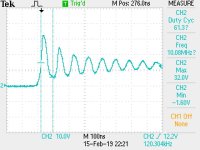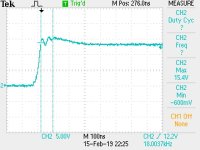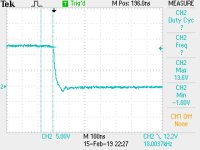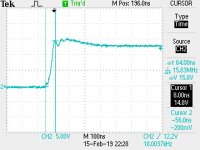shaman
1 kW
So I increased the gate resistor from 4.7ohms to 10ohms. It only helped slightly. Doe anyone know what value to stop at if I were to keep increasing?
Also, what would be the slowest rise time(slew rate) acceptable for all of this?
Also, what would be the slowest rise time(slew rate) acceptable for all of this?





